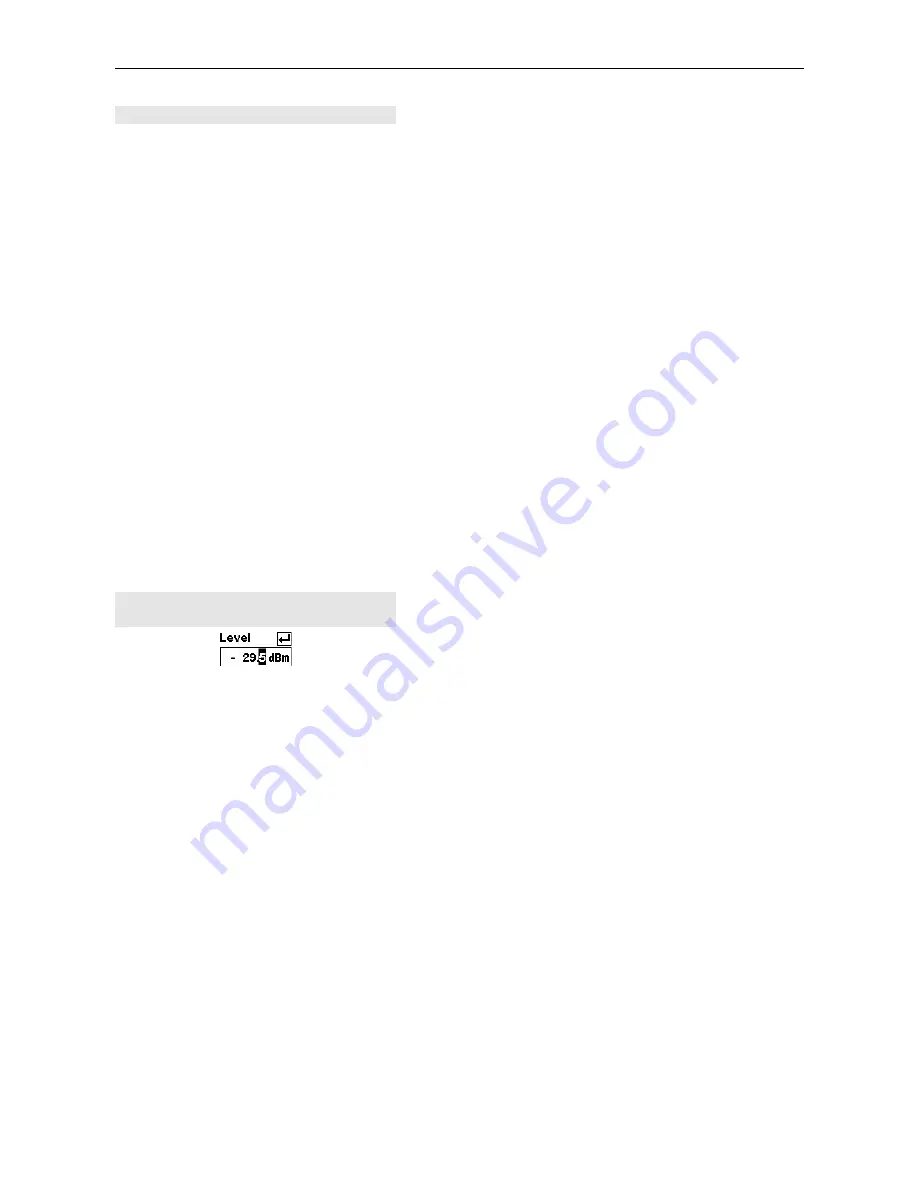
R&S NRP
Dialog boxes and their controls
1144.1400.12 3.9
E-2
Editing fields (cont.)
In the editing fields for quantities with units, the left/right
cursor keys can be used to select the unit too; the up/down
cursor keys are used to edit it. Usually, the digit panel also
contains a unit softkey which you can use to change the
unit whenever you want.
If you want to make a completely new entry, the whole field
can be cleared with the
(DEL/1TRIG)
key. In the insert
mode (indicated by the
Ι
cursor), you can enter digits
and/or letters.
Any changes you make to a field can be confirmed with the
(¶ MENU)
key. When this key is pressed, the new value is
subjected to a validity check. If the check discovers an
error, a warning message is output.
You can quit the editor by pressing the
(ESC)
key; this
leaves the old values unchanged. Any warning messages
are cleared.
Tip
To set the maximum or minimum value permitted for a
parameter, first move the insertion mark to the left edge of
the entry field by using the
(û)
key. Then press the
(â)
key (several times if necessary) to set the maximum per-
missible value or the
(ô)
key to set the mimimum permis-
sible value.
Editing fields with direct entry of val-
ues
The Filter, Range, Trigger and Trigger Advanced dialog
boxes are designed such that you can read the values
even when the dialog box is open.
If you edit a value in a dialog box using the cursor keys
(ô)
(â)
, the new value is accepted immediately when
you press a key. This feature allows you to quickly assess
the effect of editing and to perform interactive adjustment.
If you enter a new value with the letter panel (see below),
however, the symbol
[¶]
appears above the editing field
to indicate that the new value is not accepted until you
confirm it with the
(¶ MENU)
key.






























